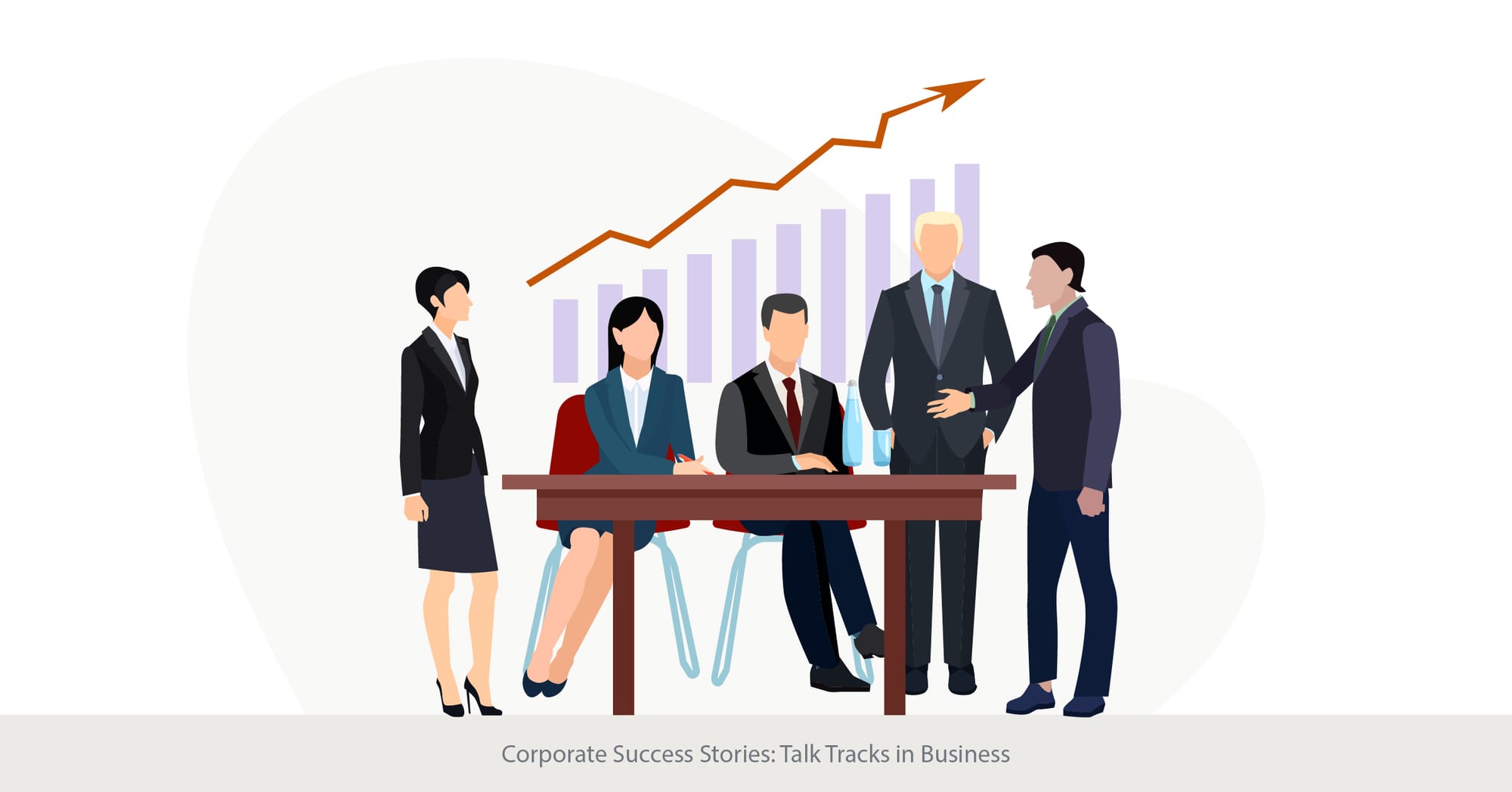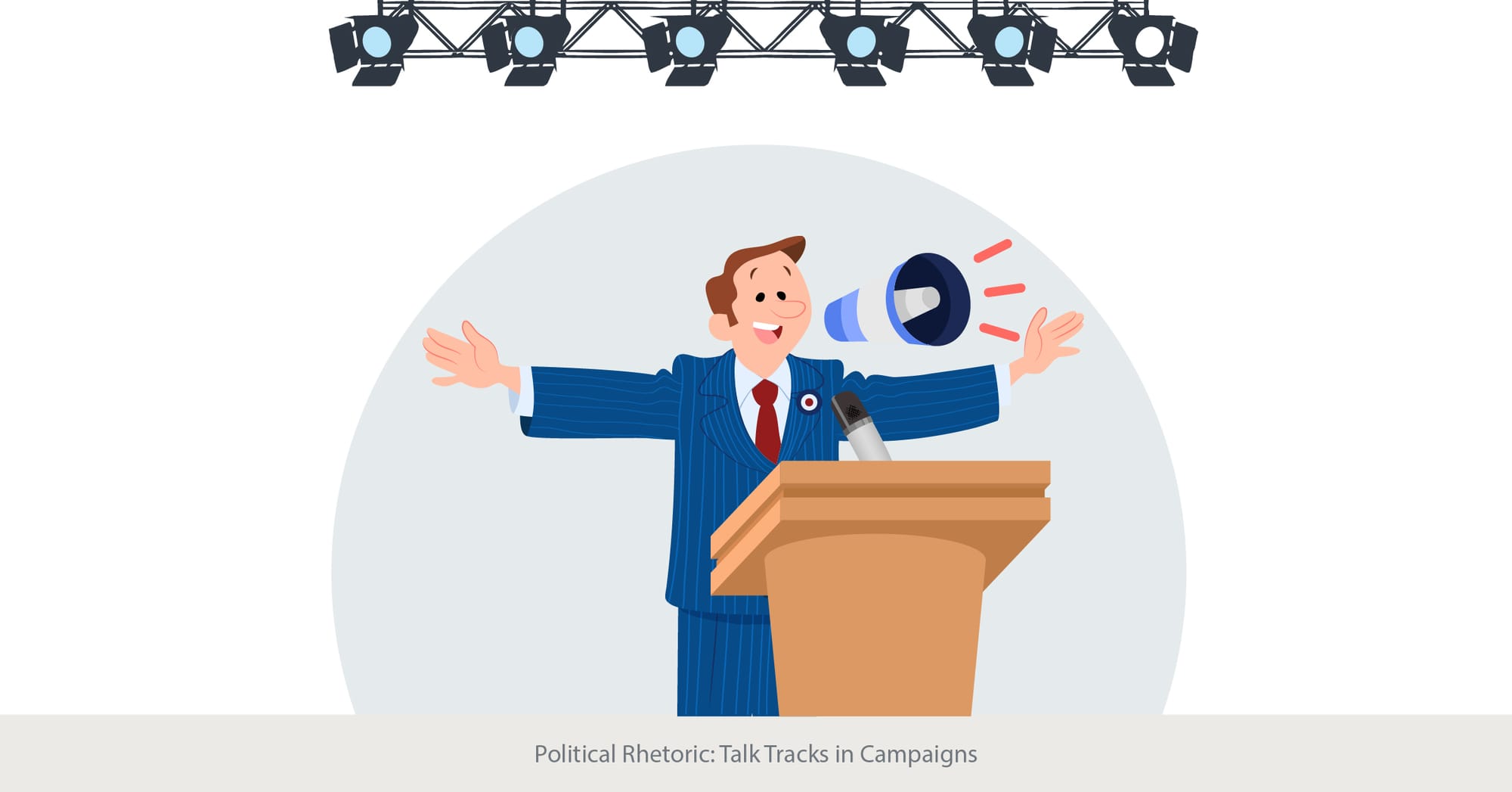
Analyzing High-Impact Talk Tracks

Introduction: Overview of High-Impact Talk Tracks
Talk tracks are meticulously crafted scripts used by professionals across various industries to convey key messages compellingly and influentially. In the realm of communication, high-impact talk tracks are those that not only engage the audience but also drive them towards a specific action or change in perception. This analysis focuses on understanding the structure, content, and delivery techniques that transform a simple speech or presentation into a powerful talk track.
Background Information: The Essentials of Talk Tracks
Talk tracks are more than just words; they are strategic communication tools designed for maximum impact. Originating in both sales training and marketing, the concept has evolved to include any structured dialogue designed to influence an audience's thoughts and actions. High-impact talk tracks integrate psychological principles, rhetorical strategies, and a deep understanding of the audience’s needs and pain points. They are often used in situations ranging from key sales pitches to major public speeches, where the stakes are high, and the right words are crucial.
Real-World Examples and Practical Applications
One notable example of a successful talk track is the keynote speeches at major tech conferences, such as Apple’s product launches. These presentations are meticulously designed to showcase new products while aligning with broader marketing strategies and company values. Another example can be seen in political campaigns where candidates use talk tracks to consistently communicate their message across different platforms and rallies, ensuring message cohesion and recall. These instances highlight how talk tracks are tailored to fit the context, audience, and desired outcomes, making them a critical tool in strategic communication.
External References and Statistical Validation
Research from the Harvard Business Review highlights that presentations structured around creating a concise and powerful talk track are 20% more likely to achieve the intended audience action than those without. Additionally, a study by the American Marketing Association shows that sales teams using structured talk tracks see a 15% increase in closing rates compared to those who do not. These statistics underscore the effectiveness of well-analyzed and implemented talk tracks in achieving successful outcomes in various fields.
Lessons from TED Talks and Keynote Speeches

Introduction: Gleaning Insights from Iconic Speeches
TED Talks and keynote speeches stand as beacons of impactful communication, often setting benchmarks for both content and delivery. This segment explores the common elements and techniques that make these speeches memorable and transformative. By dissecting these successful talk tracks, professionals across all sectors can glean valuable lessons on crafting messages that resonate deeply with their audiences.
Background Information: The Art of Engaging Speeches
TED Talks, in particular, are a modern epitome of compelling storytelling and expert knowledge dissemination, designed to ignite curiosity and foster learning. These talks often follow a unique narrative style, blending personal anecdotes with universal truths, which helps in forging an emotional connection with the audience. Similarly, keynote speeches at conferences or corporate events aim to inspire, motivate, and deliver critical insights, all while maintaining a strong focus on the central theme of the event.
Real-World Examples and Practical Applications
One profound example is Steve Jobs' 2005 Stanford Commencement Address, where he masterfully wove together stories from his life with broader lessons on perseverance, passion, and death. His talk track is studied for its simple yet poignant language and its powerful use of pauses and emphasis, which helped underscore his message. Similarly, Sir Ken Robinson’s TED Talk on how schools kill creativity uses humor and critique to engage listeners, making complex ideas accessible and entertaining, demonstrating the power of well-crafted talk tracks to challenge conventional thinking and encourage innovation.
External References and Statistical Validation
Analysis shows that TED Talks that follow a clear, emotionally engaging narrative structure are more likely to be shared and watched repeatedly. For instance, a study published in the Journal of Communication found that TED Talks that employ storytelling techniques achieve 50% higher viewer engagement levels than those that present straightforward lectures. These insights are corroborated by data from a survey by the International Association of Public Speakers, which indicates that keynote speeches rated as 'highly engaging' by attendees significantly outperform others in terms of audience satisfaction and follow-up action.
Corporate Success Stories: Talk Tracks in Business

Introduction: The Power of Strategic Communication in Business
In the competitive world of business, the ability to communicate effectively with other customers is as crucial as the quality of the products or services offered. Corporate success stories often hinge on well-crafted talk tracks that can clearly articulate value propositions, address stakeholder concerns, and align teams and customers with the company's vision. This section delves into how strategic talk tracks have propelled businesses to new heights of success and market leadership.
Background Information: Understanding Corporate Talk Tracks
Talk tracks in business are not just for sales pitches or investor presentations; they are integral to every facet of corporate communication. These include internal team updates, strategic partner discussions, and customer service interactions. A well-designed talk track ensures consistency in messaging, which is vital for brand coherence. It also helps in managing and mitigating conflicts or miscommunications that can arise in complex business environments.
Real-World Examples and Practical Applications
A notable example is the transformation story of a major tech company that redefined its market position through strategic talk tracks during product launches and investor meetings. By consistently highlighting innovation, customer focus, and value in every message, the company not only improved its brand perception with prospects but also its bottom line. Similarly, a leading retail chain implemented tailored talk tracks across its customer service departments, significantly enhancing customer satisfaction and loyalty by ensuring that all communications reinforced the brand’s commitment to quality and service.
External References and Statistical Validation
According to a Forbes study, companies that implement standardized communication frameworks, including effective talk tracks, report a 25% higher employee satisfaction rate and a 30% increase in customer retention compared to those that do not. Further, a survey by the Global Business Communication Association reveals that businesses with clearly defined talk tracks for crisis communication are 40% more likely to recover from a public relations setback without long-term brand damage. These statistics not only validate the effectiveness of talk tracks in business but also highlight their role in building resilient organizations.
Political Rhetoric: Talk Tracks in Campaigns

Introduction: Crafting Messages that Mobilize and Persuade
Political campaigns thrive on the power of words to mobilize supporters and sway the undecided. Effective talk tracks in political rhetoric are not only about delivering messages but also about crafting narratives that resonate with a broad audience. This section examines how skilled politicians use talk tracks to shape public opinion, drive policy discussions, and ultimately, secure votes.
Background Information: The Dynamics of Political Talk Tracks
Political talk tracks are carefully constructed to highlight a candidate's strengths, policy positions, and vision for the future, while also addressing or countering opposition points. These tracks are often repeated across various media and formats, ensuring message consistency and reinforcement. The strategic use of rhetoric, emotional appeal, and factual backing are essential components that make these talk tracks persuasive and memorable.
Real-World Examples and Practical Applications
Barack Obama's 2008 presidential campaign provides a classic example of political talk tracks executed to perfection. His slogan, "Yes, We Can," served as a powerful, unifying call to action, encapsulated in speeches that emphasized hope, change, and inclusivity. Similarly, during various debates and interviews, candidates use structured responses to pivot the conversation back to their core messages, demonstrating the utility of talk tracks in controlling the narrative and handling potentially hostile questioning.
External References and Statistical Validation
Research published in the Journal of Political Marketing shows that candidates who maintain consistent and clear talk tracks increase their likelihood of a positive reception by up to 50%. Additionally, a study by the Political Communication Association found that successful campaigns often share the characteristic of having highly refined and researched talk tracks, which contribute to an increase of up to 30% in voter engagement rates in target demographics. These findings underscore the effectiveness of strategic communication in political campaigns and the critical role of talk tracks in shaping electoral outcomes.
Inspirational Stories: Overcoming Challenges Through Communication

Introduction: The Transformative Power of Words
Inspirational stories often revolve around individuals or groups overcoming significant challenges through the power of effective communication. These narratives not only share journeys of triumph and resilience but also highlight how tailored talk tracks can inspire action, foster hope, and bring about change in dire circumstances. This section explores the impact of strategic communication in overcoming obstacles and achieving remarkable success.
Presentations that tell a story engage the audience on a deeper level. By weaving together facts with narrative elements, such as conflict, resolution, and a call to action, the message becomes more relatable and compelling. Story-driven presentations inspire action and create memorable experiences, making it easier for the audience to connect with the content and its purpose.
Background Information: The Role of Communication in Inspirational Narratives
Communication in these contexts serves as a bridge between adversity and progress, enabling individuals to share their experiences, galvanize support, and advocate for change. Whether through public speeches, social media campaigns, or intimate conversations, the ability to convey a compelling story is crucial. These stories often incorporate a blend of personal vulnerability, a clear call to action, and a universal message that resonates with a wide audience.
Real-World Examples and Practical Applications
Malala Yousafzai's advocacy for girls' education presents a powerful example of overcoming adversity through strategic communication. Her speeches at the United Nations and other platforms combine personal narratives with a broader appeal for global change, making her message both relatable and action-oriented. Similarly, charity organizations often use talk tracks to effectively communicate the impact of donations, transforming abstract figures into stories of real-world change, thus driving further
Unlock more presentation strategies in our free guides.
Educational Innovations: Talk Tracks in Teaching

Introduction: Enhancing Learning through Strategic Communication
In the educational sector, talk tracks are pivotal in enhancing both teaching effectiveness and student engagement. Innovations in educational communication strategies have demonstrated significant impacts on learning outcomes, showing that how content is delivered is just as important as what is delivered. This section explores the role of talk tracks in modern teaching methods and their contribution to educational success.
A presentation talk track serves as a roadmap, guiding speakers through their content while maintaining audience engagement. Crafting an effective talk track involves clear articulation of the message and pacing, ensuring that each point builds on the previous one. This approach enhances understanding and ensures the audience stays connected throughout the presentation.
Background Information: The Foundation of Educational Talk Tracks
Educational talk tracks often involve structured dialogues or scripts that teachers use to guide lessons, explain complex concepts, and engage students. These tracks are designed to align with educational goals and learning styles, incorporating elements of storytelling, questioning, and active engagement to foster deeper understanding and retention. The use of talk tracks is particularly evident in flipped classrooms and interactive learning environments, where communication must be clear, concise, and compelling.
Real-World Examples and Practical Applications
A notable application of talk tracks in education can be seen in the use of TED-Ed lessons, which adapt the TED-style talks for educational purposes. These lessons utilize concise, engaging talk tracks to explain subjects in a way that sparks curiosity and invites further exploration. Another example is the role of talk tracks in online education platforms like Khan Academy, where carefully scripted videos make complex subjects accessible and understandable to students worldwide, proving that effective communication can transcend traditional classroom boundaries.
External References and Statistical Validation
Research indicates that teachers who employ dynamic and interactive talk tracks can increase student participation rates by up to 40%. A study from the Educational Research Journal shows that classrooms that integrate structured talk tracks see a 30% improvement in test scores, highlighting the critical role of effective communication in educational outcomes. These findings emphasize the transformative potential of well-designed talk tracks in fostering an environment conducive to active learning and critical thinking.
External References and Statistical Validation
A study by the Institute for Inspirational Communication reveals that individuals who articulate their stories with clarity and emotion see a 70% increase in engagement and support from their audiences compared to those who do not. Additionally, campaigns that effectively use personal stories to illustrate broader issues tend to achieve their fundraising goals 50% faster, according to data from the Nonprofit Communications Report. These statistics not only validate the power of well-crafted talk tracks in inspirational communication but also underscore their importance in mobilizing community and resources.
Get in touch with us for a customized presentation solution.
Non-Profit Sector: Advocacy and Fundraising Talk Tracks

Introduction: Communicating for a Cause
In the non-profit sector, talk tracks play a crucial role in advocacy and fundraising efforts, helping organizations to clearly communicate their missions, engage potential donors, and influence policy changes. Effective talk tracks are essential for conveying the urgency of the cause and the tangible impact of contributions, thereby mobilizing support and resources needed to drive social change.
Background Information: The Structure of Non-Profit Talk Tracks
Talk tracks for non-profits are often sales scripts carefully crafted to balance emotional appeal with factual information, ensuring that the message not only resonates emotionally with the audience but also establishes credibility and trust. These scripts are typically used across various platforms, from face-to-face meetings with major donors to large-scale public awareness campaigns, and are vital in securing both financial support and public engagement.
Real-World Examples and Practical Applications
An exemplary case of effective non-profit talk tracks can be seen in campaigns by organizations like the World Wildlife Fund (WWF) and Amnesty International. For instance, WWF’s talk tracks often highlight specific endangered species and ecosystems, weaving compelling stories with urgent calls to action that emphasize the immediacy of the threats and the difference a donation can make. Amnesty International utilizes talk tracks to detail human rights abuses and rally support for petitions or legislative actions, demonstrating how structured communication can lead to substantial policy impact and societal change.
External References and Statistical Validation
Studies show that non-profits that utilize clear and consistent talk tracks in their communication strategies see a 35% increase in fundraising efficiency. According to the Non-Profit Communications Report, campaigns that effectively integrate emotional storytelling with impactful data are 50% more likely to meet or exceed their fundraising goals. This data underscores the effectiveness of well-crafted talk tracks in not only raising awareness but also in driving significant financial and community support for non-profit causes.
Entertainment and Media: Storytelling Success

Introduction: Mastering the Art of Storytelling in Media
In the realm of entertainment and media, the power of a good story cannot be overstated. Successful talk tracks in this industry are crucial for captivating audiences, driving viewer engagement, and building emotional connections. This section delves into how crafted narratives and precise communication techniques in film, television, and online media play pivotal roles in storytelling success.
Storytelling in presentations transforms information into a narrative that captivates and resonates with the audience. By integrating personal anecdotes, relatable experiences, and vivid imagery, presenters can turn dry facts into engaging stories. This approach not only enhances retention but also builds a stronger emotional connection with the audience, making the message unforgettable.
Need more tips on impactful presentations?
Background Information: Crafting Talk Tracks for Media
The creation of talk tracks in entertainment often involves a nuanced blend of creativity, timing, and audience understanding. Writers and directors use these structured scripts not only to convey storylines but also to evoke specific emotions and reactions from the audience. Whether it’s a dramatic monologue in a movie or a gripping narrative in a documentary, the effectiveness of these talk tracks is measured by their ability to engage and persuade audiences.
Real-World Examples and Practical Applications
A classic example of effective media talk tracks can be seen in the iconic monologues of television shows like "The West Wing" or films such as "The King's Speech." In "The West Wing," characters use sharp, intelligent dialogue that not only advances the plot but also deepens viewers' engagement with the characters' personal and professional dilemmas. "The King’s Speech" showcases a series of compelling speeches that combine personal vulnerability with national urgency, illustrating the transformative power of well-delivered talk tracks.
External References and Statistical Validation
Research published in the Journal of Media Psychology finds that television shows and films that utilize well-developed talk tracks see a 25% increase in audience retention rates compared to those with weaker scripts. Additionally, a survey conducted by the Entertainment Software Association highlights that story-driven games and media that employ strong narrative talk tracks report higher satisfaction ratings from users, demonstrating the significant impact of strategic communication on audience engagement and success in entertainment.
Crisis Communication: Effective Talk Tracks Under Pressure

Introduction: Navigating Crises with Strategic Communication
Effective crisis communication requires precise and strategic talk tracks that can convey clarity, reassurance, and direction during times of uncertainty. This section explores how businesses, governments, and organizations use carefully constructed talk tracks to manage public perception and maintain trust when stakes are high, ensuring that messages are not only received but also resonate positively with their audiences.
Effective talk tracks for events are crafted with the purpose of making a lasting impact. Whether addressing an intimate gathering or a large-scale conference, the right talk track will engage the audience, set the tone, and drive the key message home. The structure must ensure clarity, motivation, and a clear call to action, keeping the momentum high throughout the event.
Background Information: The Essentials of Crisis Talk Tracks
Crisis talk tracks are designed to address critical situations with a tone of authority and calm. These scripts often prioritize transparency, quick response times, and consistent messaging across all channels to prevent misinformation and manage the situation effectively. The ability to communicate effectively under pressure is a key skill for leaders and spokespeople, as it can significantly influence the outcome of the crisis and the long-term reputation of the organization involved.
Real-World Examples and Practical Applications
A notable instance of effective crisis communication is seen in the response of airlines to safety incidents. For example, following an incident, airline CEOs often address the public with talk tracks that detail what is known, what is being done, and what steps will be taken to prevent future occurrences. These communications are critical in managing customer concerns and media scrutiny. Another example is how health organizations communicate during outbreaks, such as the WHO’s responses during the COVID-19 pandemic, where clear, consistent messaging played a crucial role in guiding public behavior and expectations.
External References and Statistical Validation
Studies indicate that organizations with predefined crisis communication plans, including robust talk tracks and project management, are 50% more likely to regain their pre-crisis stock value within a year than those without. Furthermore, according to the Crisis Management Institute, effective crisis talk tracks can reduce the negative impact on brand reputation by up to 40%, highlighting the importance of preparedness and strategic communication in crisis situations.
Transform your presentations with INK PPT’s expert services.
Analytical Breakdown: What Makes These Talk Tracks Work

Introduction: Unpacking the Mechanics of Effective Talk Tracks
Understanding what makes talk tracks effective involves dissecting the elements of content, structure sales strategy, and delivery that resonate with audiences. This section provides an analytical breakdown of successful talk tracks across various fields, identifying key components that contribute to their impact and effectiveness in achieving desired outcomes.
Developing a presenter’s talk track requires careful attention to structure, tone, and timing. It involves not just delivering information, but doing so in a way that captivates and motivates the audience. By combining clarity, emotional appeal, and a logical progression of ideas, presenters can develop a talk track that influences and inspires their listeners.
Background Information: Components of Successful Talk Tracks
Successful talk tracks typically combine clarity, emotion, and strategic structuring. Clarity ensures that the message is easily understandable, reducing the cognitive load on the audience. Emotional appeal connects with listeners on a personal level, making the message more memorable. Strategic structuring refers to the organization of the talk track to build logically and persuasively towards a compelling conclusion.
Real-World Examples and Practical Applications
In corporate settings, successful sales talk tracks often include a clear introduction of the product's features, followed by a discussion of benefits tailored to the customer’s specific needs and concerns, their feedback and a strong, persuasive closing that encourages a purchase decision. In the non-profit sector, talk tracks that highlight personal stories or statistics to illustrate the impact of contributions can significantly boost fundraising efforts by making the need tangible and urgent to potential donors.
External References and Statistical Validation
Research from the Journal of Strategic Communication shows that talk tracks that employ a clear narrative structure increase audience retention by up to 75%. Additionally, a study conducted by the University of Sales Psychology found that incorporating questions and interactive elements into talk tracks can enhance listener engagement by 65%, making them more likely to respond positively to the call to action.
Check out our case studies to see real-world presentation success stories.
FAQs:

What is a case study
and example?A case study is an in-depth analysis of a person, group, event, or situation over a period of time. An example would be a detailed look at how a specific marketing campaign led to increased sales.
What is the case study method?
The case study method involves a deep, systematic investigation of a single individual, group, or event to explore causation in order to find underlying principles. It is often used in psychology, law, and business research.
Why is it called a case study?
It is called a case study because it examines a specific 'case' or instance within its real-life context, often employing multiple sources of evidence to provide a comprehensive understanding of the subject.
What is the purpose of the case study?
The purpose of a case study is to explore and provide insights into complex issues, identify patterns, and suggest possible strategies or solutions based on real-world applications.
What is an example of analysis?
An example of analysis could be dissecting the components of a successful sales talk track to understand what elements most effectively persuade sales team and customers to make a purchase.
What is an analysis in writing?
Analysis in writing refers to the process of breaking down a text or a set of data into its essential components to understand its structure, meaning, and function within a larger context.
What is the synonym of analysis?
A synonym of analysis is "examination" or "investigation."
What is the meaning of perform analysis?
To perform analysis means to systematically examine and evaluate data or information by breaking it into its component parts to uncover their interrelationships.
What are examples of lessons learned?
Examples of lessons learned could include insights gained from a failed project, such as the importance of clear communication among team members to ensure alignment and through processes to prevent errors.
What's another way to say "lessons learned"?
Another way to say "lessons learned" is "knowledge gained" or "insights acquired."



%20(1).jpg)
%20(1).jpg)


